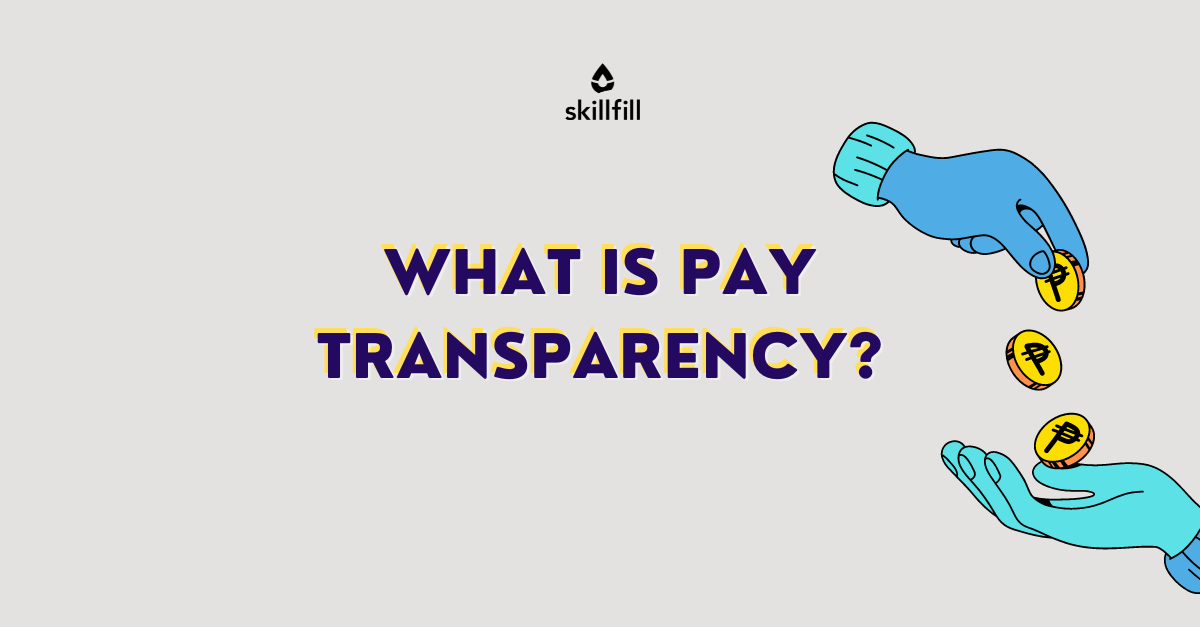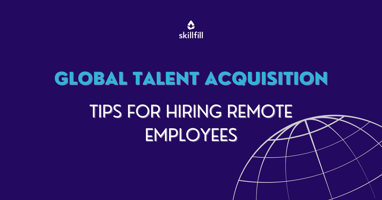According to the Federal Statistical Office (Destatis) the gender pay gap describes the pay gap per...
What is Pay Transparency and How to Implement it Effectively?
Up until now, as humans and organizations, we grew and developed in an amazing speed, and we were able to achieve milestones we never even imagined possible. But there are aspects in our society that do not show we are in the 21st century, such as the lack of diversity and inclusion, the gender gap, or the absence of pay transparency. Today, we will focus on this last point.
At skillfill.ai we are big advocates of transparency as a mean to foster trust, empowerment, and growth within an organization. In this article, we will explore what is pay transparency, its benefits, and how it can significantly impact employee satisfaction, retention, and success.

Understanding Pay Transparency
Pay transparency, also known as salary transparency or wage transparency, is the practice of openly sharing information about employee compensation, salary structures, and the factors influencing salary decisions within an organization. This culture of sharing happens not only with the current employees, but also with candidates to a job position within the organization. It empowers employees by providing them with a clear understanding of how their pay is determined, promoting fairness and trust across the workforce.
Why Should you Implement Pay Transparency?
1. Increased Employee Trust
When employees have access to information about the compensation structure and can easily understand how salary decisions are made, it fosters an environment of trust among the employees, the candidates and the organization. Trust is the foundation of a positive work environment, leading to higher job satisfaction and lower turnover rates.
2. Motivated Workforce
Transparent pay practices motivate employees to work harder and perform better, since it is clear for them what it takes to climb up the compensation lather. Employees can see a direct link between their efforts and rewards, leading to increased productivity and a stronger commitment to achieving organizational goals.
3. Attracting Top Talent
Nowadays, candidates are more likely to choose companies that prioritize transparency, especially younger talent. Prospective employees recognize worth in knowing the salary range for their desired position, making them more likely to apply and accept offers from organizations with clear compensation practices.
4. Fairness and Equality
Pay transparency promotes fairness and equality by ensuring that compensation decisions are based on objective criteria, such as skills, experience, and performance, rather than subjective factors. This approach helps minimize wage gaps and pay disparities.
5. Employee Development and Growth
Transparent pay practices enable employees to identify areas for improvement and set clear career development goals. When employees understand the skills and achievements needed to progress within the organization, they are more likely to actively pursue growth opportunities.
Best Practices for Implementing Pay Transparency
1. Educate Employees
Before implementing pay transparency, it is essential to educate employees about its benefits and the specific information that will be shared. Open communication about the company's goals and the positive impact on individual careers will help gain employee support.
2. Provide Context
Especially in the beginning, having additional context when sharing the pay information helps to avoid misinterpretations. Explaining how pay is tied to performance, experience, and market trends will give employees a more comprehensive understanding of their compensation.
3. Maintain Confidentiality When Needed
While advocating for pay transparency, it is vital to acknowledge that not all compensation details can be made public. Sensitive information, should remain confidential to protect individuals' privacy and avoid potential issues.
4. Regularly Review and Adjust
Pay transparency is not a one-time event; it is an on-going process that requires regular reviews and adjustments. As the organization grows and evolves, compensation structures may need change to remain competitive and fair.
Conclusion
At skillfill.ai, we firmly believe that pay transparency is not just a trend but a strategic approach to creating a thriving and empowered workforce. Embracing pay transparency can lead to increased employee trust, motivation, and attraction of top talent, contributing to long-term success. Consider implementing pay transparency in your organization, as it is a powerful strategy to foster a positive work culture and achieve organizational success!



